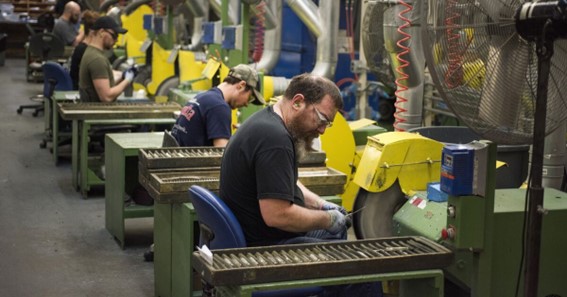Are you curious to know what is secondary activities? You have come to the right place as I am going to tell you everything about secondary activities in a very simple explanation. Without further discussion let’s begin to know what is secondary activities?
Economic activities can be broadly classified into primary, secondary, and tertiary sectors. While primary activities involve the extraction and production of raw materials, secondary activities encompass the processing, manufacturing, and construction sectors. These secondary activities add value to raw materials and contribute significantly to economic growth and development. In this blog, we will explore the concept of secondary activities, their significance, and their impact on the overall economy.
What Is Secondary Activities?
Secondary activities refer to the processes involved in transforming raw materials into finished or intermediate goods. These activities involve manufacturing, construction, and other forms of processing that add value to the outputs of primary activities. Secondary activities bridge the gap between raw materials and final products, turning them into usable goods for consumers and businesses.
Examples Of Secondary Activities:
-
Manufacturing:
Manufacturing involves the production of goods through various processes, such as assembling, fabricating, or transforming raw materials. This sector includes industries such as automobile manufacturing, electronics, textiles, food processing, and machinery production.
-
Construction:
Construction activities encompass the creation of infrastructure, buildings, and other structures. It involves activities like architectural design, engineering, site preparation, and the assembly of materials. Construction plays a crucial role in urban development, housing, and infrastructure projects.
-
Processing and Refining:
Processing and refining activities involve the transformation of raw materials into intermediate or finished goods. This includes activities such as refining crude oil into petroleum products, milling grains into flour, or converting iron ore into steel.
Significance Of Secondary Activities:
-
Value Addition:
Secondary activities add value to raw materials by processing and transforming them into usable products. This value addition increases the economic worth of the resources, making them more valuable and marketable.
-
Job Creation:
Secondary activities generate employment opportunities by establishing industries and factories. Manufacturing and construction sectors often provide substantial employment, contributing to income generation, skill development, and economic stability.
-
Economic Growth and Diversification:
Secondary activities play a vital role in driving economic growth and diversification. They expand the industrial base, promote innovation and technological advancements, and contribute to increased production and export capacities. These activities reduce dependence on primary industries and contribute to a more robust and resilient economy.
-
Infrastructural Development:
Construction activities, a significant part of secondary activities, contribute to the development of infrastructure, including transportation networks, buildings, and utilities. This infrastructure provides essential support for economic activities, enhances connectivity, and improves the quality of life.
-
Supply Chain Development:
Secondary activities foster the development of supply chains and related industries. Manufacturers rely on suppliers of raw materials, machinery, and components, creating interdependencies and further economic opportunities. This interconnectedness strengthens the overall business ecosystem.
Conclusion:
Secondary activities form a crucial component of the economy, adding value to raw materials and driving economic growth. The manufacturing, construction, and processing sectors contribute to job creation, economic diversification, and the development of infrastructure. By transforming raw materials into finished or intermediate goods, secondary activities fuel innovation, technological advancements, and industrial expansion. The synergy between primary and secondary activities creates a sustainable and thriving economy, providing employment opportunities, enhancing living standards, and facilitating economic progress.
FAQ
What Are Secondary Activities To Example?
Examples of secondary activities include small potteries, handicraft manufacture, Factories that manufacture steel, chemicals, plastic, and automobiles, Textile mills, Food producing facilities such as breweries and food processing industries.
What Is An Example Of A Secondary Activity Expense?
Examples include a retailer’s financing function involving interest revenue and interest expense, disposal of long term assets used in the business, lawsuit settlements, renting out unused space, etc.
What Are Primary Or Secondary Activities?
Primary sector includes agriculture, forestry, animal husbandry, fishing, poultry farming, and mining. Quarrying and manufacturing is included in the secondary sector. Trade, transport, communication, banking, education, health, tourism, services, insurance etc. are included in the tertiary sector.
What Are The Secondary Activities Of A Business?
Secondary activities
- Procurement and purchasing.
- Human resource management.
- Technology development.
- Company infrastructure.
I Have Covered All The Following Queries And Topics In The Above Article
What Is Secondary Economic Activities
What Is Primary Secondary And Tertiary Activities
What Is The Importance Of Secondary Activities In The World
What Is Secondary Activities Class 12
What Is The Difference Between Primary Secondary And Tertiary Activities
What Is Secondary Activities Or Manufacturing
What Is Secondary Activities Explain With Example
At What Percent Of Population Is Engaged In Secondary Activities
What Is The Combination Of Primary And Secondary Activities Important For?
What Is Secondary Activities Class 8
What Is Secondary Sector Activities
What Is The Difference Between Primary And Secondary Activities
What Is The Secondary Activities
What Is Secondary Activities In Geography
What Is The Contribution Of Secondary Activities In Brazil Gdp
What Is Secondary Activities
